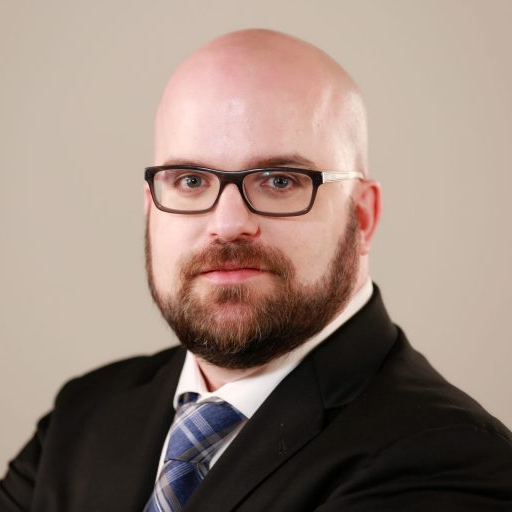“Despite our approach, a recent responsive article accuses us of “fail[ing] to present a balanced view” and supporting the extraction of “excessive revenues for SEP patent owners”. But notably, the author does not provide any contemporaneous support for his assertions.”
 In a previous series of articles that were published on IPWatchdog, we analyzed and categorized various fair, reasonable and non-discriminatory (FRAND)-related statements made by a variety of entities, including those that are primarily licensors of Standard Essential Patents (SEPs), those who sell network equipment products or components and who are also significant licensors of SEPs, those who sell end user products and who are significant licensees of SEPs, an association focused on FRAND policy development, and a patent pool. One of those articles considered statements made in relation to the appropriate royalty base to which FRAND licensing rates should be applied, with one camp apparently favoring use of the end product and another clearly favoring using a component thereof (oftentimes referred to as the smallest saleable patent practicing unit, or “SSPPU”).
In a previous series of articles that were published on IPWatchdog, we analyzed and categorized various fair, reasonable and non-discriminatory (FRAND)-related statements made by a variety of entities, including those that are primarily licensors of Standard Essential Patents (SEPs), those who sell network equipment products or components and who are also significant licensors of SEPs, those who sell end user products and who are significant licensees of SEPs, an association focused on FRAND policy development, and a patent pool. One of those articles considered statements made in relation to the appropriate royalty base to which FRAND licensing rates should be applied, with one camp apparently favoring use of the end product and another clearly favoring using a component thereof (oftentimes referred to as the smallest saleable patent practicing unit, or “SSPPU”).
Conscious of the fact that there is a wide range of opinions on issues related to FRAND licensing, we intentionally chose to avoid putting forth any subjective views as to the way things should be, instead choosing to simply report such statements, highlight the main differences, and sprinkle in some FRAND-related decisions and court guidelines that appeared relevant, and sometimes contradictory, to such statements. Despite our approach, a recent responsive article, “The SSPPU is the Appropriate Royalty Base for FRAND Royalties for Cellular SEPs,”accuses us of “fail[ing] to present a balanced view” and supporting the extraction of “excessive revenues for SEP patent owners”. Whether the views presented support extracting excessive revenues is a matter of opinion. What is not a matter of opinion is that the views put forth are those of judges around the world today. Notably, the author does not provide any contemporaneous support for his assertions, instead relying on conclusory statements, strawman arguments, and old case law, all the while ignoring inconvenient facts and what is actually happening in courts around the globe.
Though there are too many examples to comment on all of them, one that is particularly illustrative is the author’s alleged goal of “seek[ing] to vindicate the true meaning and role of FRAND”, while at the same time trying to convince his readers that those “innovative companies that engage in research and development and supply products to the marketplace” need to be protected “from abuse of SEPs.” But when it comes to cellular technology, the innovative companies are those with the essential patents. Although implementers who interface directly with consumers are fundamentally important for anyone in this industry to make money, the implementation of technology covered by SEP portfolios does not make one an innovator, it makes one a copyist that needs to pay a royalty.
Specifically, the article advances three unsupported theses which we will address in turn below:
(1) “SSPPU is the most accurate and proper methodological approach”;
(2) There is “significant industry recognition that the SSPPU is the appropriate royalty base for determining FRAND royalties for cellular SEPs”; and
(3) “End product licensing… seeks to tax innovation in those products that have nothing to do with SEPs”.
Unsupported Thesis #1: SSPPU is the Most Accurate and Proper Methodological Approach
According to the responsive article, “[t]he authors incorrectly paint a position that FRAND royalties based on the SSPPU are out of step with judicial authority”, which the author seeks to counter by arguing that “considerable legal authority supports the use of the SSPPU”. Our articles never said, however, that the SSPPU approach could not be used to assess damages for infringement of a patent subject to a licensing commitment. Rather, we noted that despite Judge Rodney Gilstrap’s ruling that, as a matter of French law, the ETSI FRAND commitment does not require offering licenses having a royalty based on the SSPPU, Apple and the Fair Standards Alliance (FSA) nonetheless maintain that the FRAND royalty base should be based on the smallest saleable unit. Apple and the FSA are entitled to their opinion of the way things should be, but they are incorrect on the actual ETSI FRAND commitment.
The author then attacks this straw man argument by noting several cases employing the SSPPU approach, that neither of the cases referred to in our article, nor the ETSI IPR policy, precludes the use of SSPPU approach, and that no court has held royalties must be derived from the end device price. But even if one were to assume, arguendo, that the author’s assertions are correct, that still does not support his conclusion that the “SSPPU is the most accurate and proper methodological approach”. Tellingly, the author refers to the Ericsson, Inc. v. D-Link Sys., Inc., 773 F.3d 1201, 1232-33 (Fed. Cir. 2014) which actually supports the exact opposite proposition (i.e., D-Link failed to exclude Ericsson’s damages evidence for violating the entire market value rule, as a result of such evidence relying on comparable licenses predicated on the value of the end product).
The article also fails to mention that while the SSPPU approach is rooted in United States’ patent law, declarations made to ETSI are governed by French law contract law. Accordingly, many well-known FRAND cases do not employ the SSPPU approach because they are not applying U.S. law (such as Unwired Planet International Ltd -and- (1) Huawei Technologies Co. Ltd (2) Huawei Technologies (UK) Co. Ltd -and- Unwired Planet LLC, [2017] EWHC 2988 (Pat) (In The High Court of Justice Chancery Division Patents Court), Archos S. A. v. Koninklijke Philips N.V., Case number C/09/505587 I HA ZA 16-206 (District Court of the Hague, February 8, 2017) and the Shenzhen Intermediate People’s Court’s 2018 decision in Huawei v. Samsung).
Apparently, the author not only supports using the SSPPU as the royalty base but more specifically the profit margin thereof (see his reference to the In re Innovatio IP Ventures, LLC Patent Litigation decision). As will be explained below, such an approach ignores the realities of the cellular supply chain and who assumes what risks (and who does not) when it comes to intellectual property claims.
Unsupported Thesis #2: There is “Significant Industry Recognition that the SSPPU is the Appropriate Royalty Base for Determining FRAND Royalties for Cellular SEPS.”
The article also accuses us of downplaying industry support for SSPPU based FRAND licensing and seeks to paint a picture of broad support for SSPPU-based FRAND licensing by referring to a European Workshop Agreement supported by the implementer community. Unlike our article that mentions such Workshop Agreement, however, the article fails to mention that there was a competing proposal, supported by the major SEP holders, and that a consensus has not been reached on this point. Instead, the author seeks to parlay support by implementers for an approach to FRAND licensing that is different from what is currently being done, into actual industry practice. But as noted in our article, despite the implementer community’s desired approach, Apple’s representative recently admitted in a case involving PanOptis that FRAND does not require that the royalty base be limited to the baseband processor, and that she had no recollection that Apple ever entered into a license agreement expressly calculating payment with reference to the baseband chip. Similarly, HTC conceded in its breach of FRAND case against Ericsson, “that there are no examples in the industry of licenses that have been negotiated based on the profit margin, or even the cost, of a baseband processor.”
Interestingly, the responsive article refers to the Fed. Trade Comm’n v. Qualcomm Inc., 411 F. Supp. 3d 658, 753 (N.D. Cal. 2019), rev’d and vacated, 969 F.3d 974 (9th Cir. 2020) (FTC) decision to note that some companies now focusing on end product licensing previously “advocated that cellular SEPs must be licensed to component suppliers”. Such advocacy is not evidence of actual industry practice either. For as the article tacitly acknowledges, the FTC v. Qualcomm case was in part about Qualcomm’s refusal to license competing chip suppliers:
As a Qualcomm executive explained to the Internal Revenue Service, Nokia and Ericsson switched positions and followed Qualcomm’s approach of focusing on the end product to make more money: “[S]o they also – following our lead I might say – you know, decided hey, we can license these patents and make money by doing and we can make more money licensing this than licensing the chip. So like they licensed the cell phone, not the chip.” FTC, 411 F. Supp. 3d at 755 (quoting CX-6786-R at 42:17-21).
Consistent with his approach, the author fails to note that Qualcomm was ultimately found not to have violated antitrust laws as a result of its approach, and that the Court of Appeal declined to decide whether or not Qualcomm had breached any FRAND obligations.
Unsupported Thesis #3: End Product Licensing… Seeks to Tax Innovation in Those Products That Have Nothing to Do With SEPS
Notwithstanding Apple and HTC’s inability to find a single license based on the SSPPU, the article maintains that “there is a track record of component licensing of cellular SEPs that some SEP licensors have tried to replace with the more lucrative practice of end product licensing that seeks to tax innovations in those products that have nothing to do with SEPs” (emphasis added). In support of this argument, the author points to the FTC v. Qualcomm even though, once again, Qualcomm’s end product licensing approach was not found to be an anti-trust violation nor a breach of its FRAND obligations. Additionally, the author provides the following example which, in his eyes, illustrates the “unreasonableness of levying a royalty based on the full device price”:
Samsung, for example, sells the Galaxy S21 Ultra 5G with 128 GB of memory for $499.99 and the same phone with 256 GB of memory for $549.99. Further, Samsung is introducing an A series of 5G smartphones for under $300, with a lower quality camera, lower quality display technology, and other lesser features. This variability in pricing of Samsung 5G phones demonstrates that the device price reflects a variety of factors and is not a reliable proxy for determining the value of 5G patents. … But it is clear that adding more memory or more non-cellular features to a device has nothing to do with cellular innovation. Accordingly, there is no justification for a SEP licensor to obtain a higher rate simply because a device offers more features, be it more memory, a better screen, or a desirable user experience. Rather, the royalties for SEPs should, like any reasonable royalty, reflect just the value of the patented inventions.
What the author fails to mention, however, is that Samsung does not sell either smartphone without cellular technology for, amongst other reasons, without such technology they would no longer constitute “phones”. Nor does the author acknowledge that Apple’s iPod, which is basically an iPhone without cellular functionality, is a fraction of the price of an iPhone despite having the same memory capacity (the iPhone SE with 128GB capacity starts at $449 whereas the 128GB iPod Touch costs $299).
The author also conveniently overlooks Apple’s seemingly contradictory position in a recent anti-trust trial in California. According to media reports, Apple CEO Tim Cook reportedly defended Apple’s 30% commission on in-app purchases and anti-steering provisions (which prevent app vendors from advising users that they could make such purchases elsewhere), despite no involvement by Apple in the operation of the app (Fortnite). According to Mr. Cook, such approaches were justified on the basis that Apple provides the ecosystem and because the commission is used by Apple to obtain a return on its intellectual property related thereto.
What the Author Chooses to Ignore
Most tellingly is not what the author says, but rather what he does not say. Specifically, the author does not acknowledge the point made in our article that Judge Rodney Gilstrap found, in HTC’s breach of FRAND case against Ericsson, that “the profit margin that a component supplier makes is not necessarily reflective of the value of the intellectual property embodied in that component, especially in a situation like the one presented here where the component supplier does not pay royalties for that intellectual property”. Further, the author does not mention that the rates determined from unpacking prior licenses in the leading FRAND cases are significantly higher than those that would result from his desired SSPPU approach, especially when using the profit margin thereof. Nor does the author recognize that IP royalties for cellular technology have remained relatively constant throughout the wireless generations and, in the case of 4G LTE, were much lower than what the industry had initially anticipated and announced.
The author also fails to note Assistant Attorney General Makan Delrahim’s remarks at the USC Gould School of Law’s Center for Transnational Law and Business Conference that requiring use of the SSPPU approach could attract antitrust scrutiny:
“If an SSO pegs its definition of “reasonable” royalties to a single Georgia-Pacific factor that heavily favors either implementers or innovators, then the process that led to such a rule deserves close antitrust scrutiny. While the so-called “smallest salable component” rule may be a useful tool among many in determining patent infringement damages for multi-component products, its use as a requirement by a concerted agreement of implementers as the exclusive determinant of patent royalties may very well warrant antitrust scrutiny.”
Finally, worth noting is the article’s conflating of FRAND licensing rates and damages for patent infringement without any explanation. For, as we discussed in a previous article, these concepts are not one and the same.
Image Source: Deposit Photos
Author: iqoncept
Image ID: 159215852

![[IPWatchdog Logo]](https://ipwatchdog.com/wp-content/themes/IPWatchdog%20-%202023/assets/images/temp/logo-small@2x.png)

![[[Advertisement]]](https://ipwatchdog.com/wp-content/uploads/2023/01/2021-Patent-Practice-on-Demand-1.png)

![[Advertisement]](https://ipwatchdog.com/wp-content/uploads/2024/04/Patent-Litigation-Masters-2024-sidebar-early-bird-ends-Apr-21-last-chance-700x500-1.jpg)

![[Advertisement]](https://ipwatchdog.com/wp-content/uploads/2021/12/WEBINAR-336-x-280-px.png)
![[Advertisement]](https://ipwatchdog.com/wp-content/uploads/2021/12/2021-Patent-Practice-on-Demand-recorded-Feb-2021-336-x-280.jpg)
![[Advertisement]](https://ipwatchdog.com/wp-content/uploads/2021/12/Ad-4-The-Invent-Patent-System™.png)







Join the Discussion
One comment so far.
Michael Friedman
July 9, 2021 04:43 pmThis is the response I would have written if I was less lazy. Thanks to the authors for their good work. I also note that author of the responsive article works a Wilmer Hale, on of AAPL’s house counsel. I was troubled by the disclosure omission.